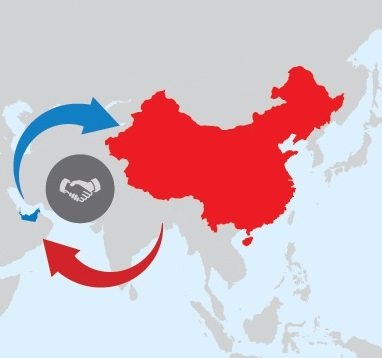China to become GCC’s biggest export market
Developing countries in Asia—particularly China and India—are rapidly becoming the GCC’s biggest trading partners

China on track to become biggest export market for GCC by 2020, says EIU report
Developing countries in Asia—particularly China and India—are rapidly becoming the biggest trading partners with Gulf Co-operation Council (GCC) countries ahead of other regions, according to a new report released by the Economist Intelligence Unit (EIU) in conjunction with Falcon and Associates.
The study, entitled GCC Trade and Investment Flows, explores the GCC’s economic ties with each world region and identifies major growth drivers. Key findings show a growing trend towards Asia, with China and India seen as the most critical economies, and a broadening of trade and investment to new sectors.
The EIU predicts China will be the largest export market for the GCC by 2020. Between 2010 and 2013, GCC-China trade grew faster than with any other significant trade partner. Chinese investment is also on the uptick in construction, wholesale trade and retail, with more than 3000 Chinese companies registered in Dubai (up from just 18 in 2005), indicating the emirate’s increasing role as a gateway of opportunity for Asia into the Middle East, Africa, Europe and beyond.
“Back in 2011, when we conducted our last study on the Gulf’s external economic relationships, it was clear that emerging markets were surging ahead as economic partners for the GCC,” says Adam Green, senior editor at the Economist Intelligence Unit’s EMEA office. “Since then, emerging Asia has continued on trend, especially China, despite the emerging markets slowdown. And while oil continues to be a major trade driver, we are seeing greater commercial diversity, from China-built malls and markets in the Gulf, to Gulf investments in Asian mobile telecoms, real estate and financial services.”
Commenting on the findings, Hongbin Cong, Managing Director of Invest Dubai, Falcon and Associates, said, “We are seeing a new era of Asian growth as countries revisit and reinvest in the New Silk Road. Dubai is at the very centre of this. The emirate has a key role to play in driving the upward trajectory of GCC-Asia trade facilitated by the strength of its location, infrastructure and connectivity and as is evident by its links with China and India. In 2013, China was Dubai’s second largest trading partner and is on course to overtake India after US$21.9bn of trade was recorded in the first six months of this year.”
As for the importance of India, the report shows GCC exports growing at an annual rate of 43% over the last decade, the highest rate with any major trade partner, now making up 11% of total GCC exports. Findings also illustrate that Indian investment remains a significant growth driver for the UAE.
Green added, “Perhaps the most important signal of growth in commercial ties is just not the flow of goods or money, but people, with an increasing number of Indians working in the Gulf. The numbers of new Indian businesses is also on the up, especially in the UAE. There is a lot of excitement at the moment about India finding its feet again and returning to its high growth path. If that happens, the Gulf region will be a clear beneficiary.”
Growth hotspots between the GCC and other markets are identified in the report, including the increased attention on new markets in east, west and southern Africa. From telecommunications and private equity in West Africa to energy projects in South Africa and Mozambique, investment flows are diversifying, although concentrated in small to medium deals.
The report also covers Latin America and the Caribbean; Middle East, North Africa and Turkey (MENAT); the Association of Southeast Asian Nations (ASEAN); the Commonwealth of Independent States as well as Western markets including Europe, North America, Australia and New Zealand.

























